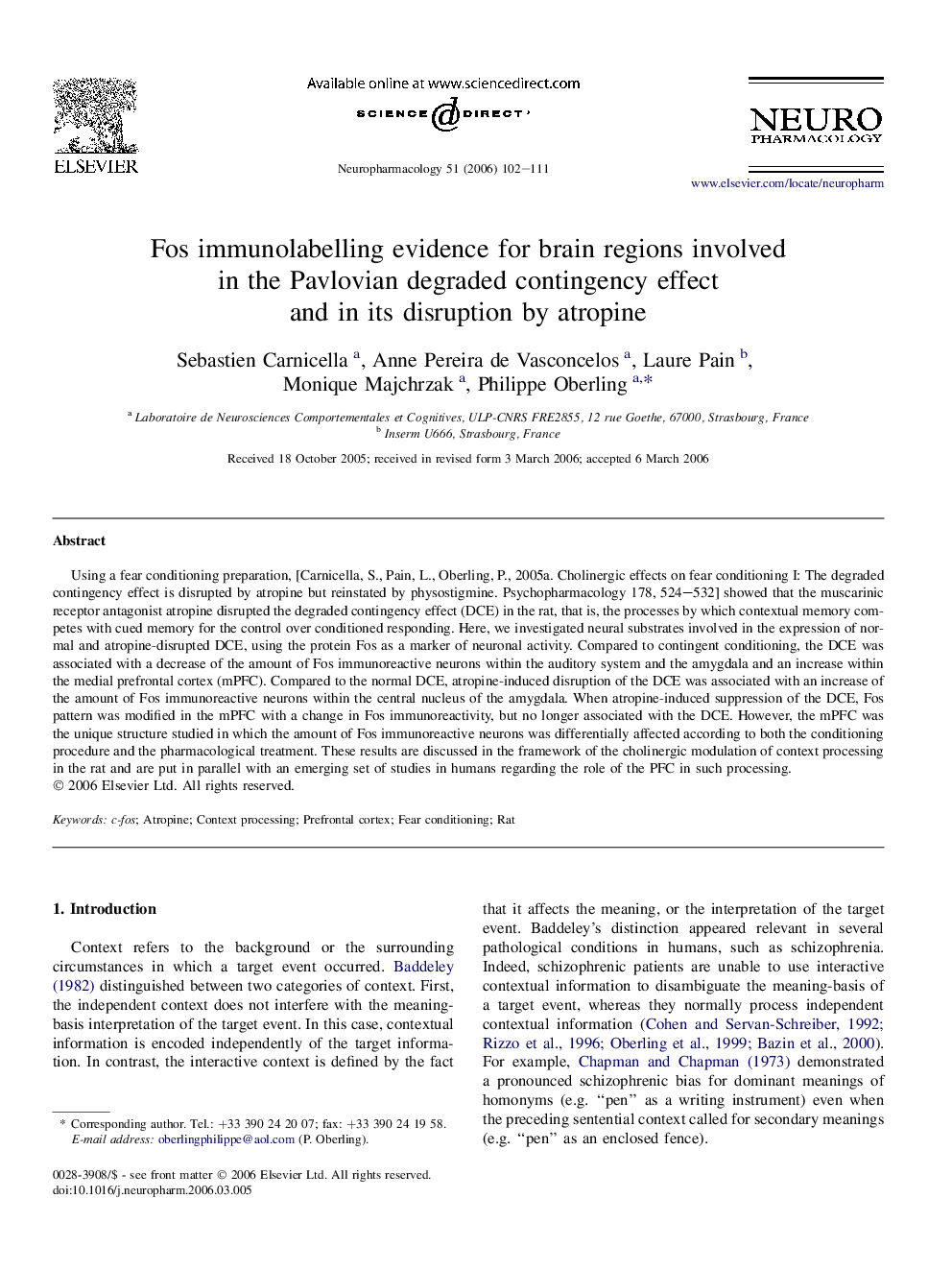| Article ID | Journal | Published Year | Pages | File Type |
|---|---|---|---|---|
| 2495388 | Neuropharmacology | 2006 | 10 Pages |
Using a fear conditioning preparation, [Carnicella, S., Pain, L., Oberling, P., 2005a. Cholinergic effects on fear conditioning I: The degraded contingency effect is disrupted by atropine but reinstated by physostigmine. Psychopharmacology 178, 524–532] showed that the muscarinic receptor antagonist atropine disrupted the degraded contingency effect (DCE) in the rat, that is, the processes by which contextual memory competes with cued memory for the control over conditioned responding. Here, we investigated neural substrates involved in the expression of normal and atropine-disrupted DCE, using the protein Fos as a marker of neuronal activity. Compared to contingent conditioning, the DCE was associated with a decrease of the amount of Fos immunoreactive neurons within the auditory system and the amygdala and an increase within the medial prefrontal cortex (mPFC). Compared to the normal DCE, atropine-induced disruption of the DCE was associated with an increase of the amount of Fos immunoreactive neurons within the central nucleus of the amygdala. When atropine-induced suppression of the DCE, Fos pattern was modified in the mPFC with a change in Fos immunoreactivity, but no longer associated with the DCE. However, the mPFC was the unique structure studied in which the amount of Fos immunoreactive neurons was differentially affected according to both the conditioning procedure and the pharmacological treatment. These results are discussed in the framework of the cholinergic modulation of context processing in the rat and are put in parallel with an emerging set of studies in humans regarding the role of the PFC in such processing.
